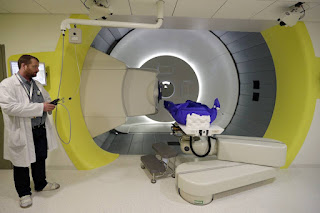All things considered, malignant growth stage is an essential variable for the treatment of leukemia.
Following pointers sway the organizing of leukemia:
When and how does my PCP decide the phase of my leukemia?
Specialists can utilize different strategies for arranging to assess the phase of leukemia. Alongside indications, other experimental outcomes and the patient's overall wellbeing profile will likewise be considered for assessment of leukemia stage.
Rather than utilizing customary strategies, for example, the TNM organizing framework, for leukemia arranging, a specialist will initially decide the subtype of the condition by assessing the aftereffects of cytologic tests, stream cytometry or other lab tests.
Every leukemia subtype is then arranged to utilize an exceptional framework:
Intense lymphocytic leukemia – Staging depends on the sort of lymphocyte and the development of the cells
Intense myelogenous leukemia – Staging is finished by utilizing the French-American-British (FAB) framework, which considers the number of sound platelets, the size and number of the leukemia cells, the progressions in the chromosomes of the leukemia cells and other hereditary anomalies.
Constant lymphocytic leukemia – Staging is finished utilizing the Rai framework, which depends on three variables: i) a number of lymphocytes in the blood ii) level of the lymph hub, spleen or liver growth iii) presence of paleness or thrombocytopenia.
Ongoing myelogenous leukemia – Staging depends on the number of sick cells found in blood and bone marrow tests.
Intense Lymphoblastic Leukemia (ALL)
What is intense lymphocytic leukemia (ALL)?
Intense lymphoblastic leukemia (ALL) is a blood disease that influences white platelets. There are two primary kinds of white platelets, lymphocytes (impacted by ALL) and myelocytes (impacted by AML).
Lymphocytes are additionally separated into B and T cell lymphocytes.
Everything is a range of infection contained a few distinctive subtypes, named for the cell type that is impacted (B or T) and how unusual the cell shows up under a magnifying lens. An individual with ALL creates unusual quantities of white platelets rather rapidly, normally over weeks, giving the infection the name "intense."
The white platelet (WBC) count might be higher or lower than typical, however, the WBCs that are being delivered are juvenile and don't work well. Since WBCs are a significant piece of battling diseases, patients frequently have various contaminations that don't react to treatment before they are analyzed. Certain individuals will have low red platelet or platelet counts in light of the fact that the overpopulation of WBCs swarms out these cells.
What are the phases of intense lymphocytic leukemia (ALL)?
Intense Myeloid Leukemia (AML)
Intense myeloid leukemia can be separated into eight phases as follows:
Undifferentiated AML or M0: This stage has no significant indications of separation in bone-marrow cells.
Myeloblastic leukemia or M1: In this stage a few indications of granulocytic detachment with or without least cell development.
Myeloblastic leukemia or M2: This stage alludes to bone marrow cells development past the promyelocyte stage.
Promyelocytic leukemia or M3: In this stage, abnormal cells are in creating stage with cores of various shape and sizes.
Myelomonocytic leukemia or M4: This stage has variable measures of separated granulocyte and monocytes in coursing blood and bone marrow.
Monocytic leukemia or M5: This stage has two classes: the first stage is characterized by insufficiently separated monoblasts with hereditary material, while the second stage is characterized by a few monocytes, promonocytes and monoblasts.
Erythroleukemia or M6: In this stage blood disease is characterized by abnormal RBCs making cells that count up to over half of the nucleated cells inside the bone marrow.
Megakaryoblastic leukemia or M7: The stage alludes to broad fibrosis present in the bone marrow.
Stage 4 leukemia future
Some subtypes of AML will generally have a preferred viewpoint and anticipation over others.
What are the phases of intense myelogenous leukemia (AML)?
Since AML begins in the bone marrow and is typically not recognized until it has spread to different organs, customary malignant growth organizing isn't required.
Rather than utilizing the normal TNM strategy for assessing the malignant growth, the subtype of AML is arranged to utilize a cytologic (cell) framework.
Specialists are not just ready to anticipate how the malignant growth will react to treatment dependent on the cell grouping, but on the other hand can precisely survey the guess.
Intense myeloid leukemia stages
There are two primary frameworks that have been utilized to characterize AML into subtypes:
French-American-British (FAB) arrangement
World Health Organization (WHO) arrangement
As per FAB characterization, AML is isolated into subtypes, M0 through M7. This depends on development of the cells and furthermore, the sort of cell leukemia creates.
In contrast to the FAB arrangement framework, the WHO characterization framework considers large numbers of the variables that are currently known to influence the forecast (standpoint) that can all the more likely group AML.
AML subtypes and organizing
Utilizing a framework known as French-American-British (FAB) arrangement, AML is grouped into eight subtypes, M0 through M7, in view of:
Number of sound platelets
Size and number of leukemia cells
Chromosomal changes in leukemia cells
Whatever other hereditary anomalies have happened.
Constant Lymphocytic Leukemia (CLL)
What are the phases of constant lymphocytic leukemia (CLL)?
Since CLL infection creates and spreads in an unexpected way, its organizing is unique in relation to arranging for the sort of malignant growths that structure cancers.
The Rai Staging System depends on platelet counts, rather than rating the size and cancer spread.
The Binet system, then again, sums up the spread of disease all through the lymph hubs in three phases just marked A, B and C.
By distinguishing the phase of ongoing lymphocytic leukemia, your primary care physician can pick when to start treatment and figure out which CLL medicines might be best for you.
Rai Staging System for CLL
Binet Staging System
Persistent Myeloid Leukemia stages
To arrange CML, your oncologist or malignant growth expert will inspect blood and bone marrow tests to decide the number of ailing cells.
There are three phases of CML:
Constant: This is the underlying or the soonest period of CML. The most extreme number of CML patients are analyzed during this stage as they experience gentle manifestations, especially weariness.
Sped up: If CML neglects to react to therapy well during the constant stage, it turns out to be more forceful, which then, at that point, prompts the sped up stage. Now, manifestations might turn out to be more recognizable.
Blastic: This is by a long shot the most forceful phase of ongoing myeloid leukemia. Blastic alludes to having over 20% myeloblasts or lymphoblasts. Manifestations experienced during this stage are like those of intense myeloid leukemia.



.png)


.png)